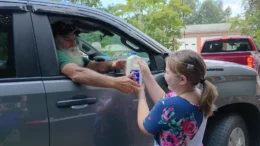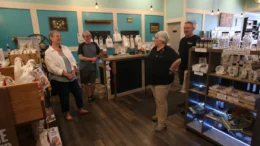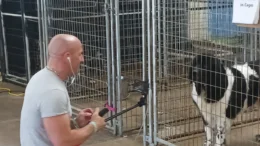So, what does it take to ensure a school garden or farm project is successful? Based on the USDA and the Department of Health and Human Services’ analysis of the long-running Farm to School initiative, success can take many forms, but there are some similarities across many of the most successful programs. From urban schools in New York and California to rural districts in Mississippi and Colorado, and everything in between, these agencies have highlighted the most important factors for the success and resilience of a school garden project. Frankly, these recommended best practices are very similar for any project, not just a garden, so they’re good to keep in mind no matter what sort of initiative, in any sort of setting, that you might want to get started!
The first and most important factor is the existence of a champion. This is someone (or, if you’re really lucky, a few someones) who will be the program’s greatest cheerleader, motivating others around them to support and nurture the program. This can be a community member, a superintendent, a teacher, even a student, but it’s critical to have one or more people who truly believe in the potential of their program, and bring others along with their enthusiasm, drive, and work ethic.
Collaboration across a wide range of stakeholders is the next critical step. Whether it’s a formal “wellness council” like those used in some large urban districts, or the more informal partnerships often used in rural areas, the ability to discuss and plan around the needs and priorities of as many members of the community as possible is key. And in those many cases where someone other than a student is driving a school garden program, it’s important to not forget to include the students themselves in the process! Everyone’s input and motivations are important, and the most successful programs try their absolute best to include as many voices (and hands) as possible.
Finally, the ability to find external funding in the early stages of a program also proved critical, as we here in the AC Valley know only too well! While a garden program is not outrageously expensive in the grand scheme of things, most school districts (and communities in general) are stretched thin as it is, and there is rarely much left over for wellness initiatives, especially when considering the cost of staff to manage them. Many less-successful programs mistakenly rely solely on volunteer efforts, which both undervalues the skills and experience of those volunteers and ignores the fact that the most dedicated volunteers are often extremely involved in their community and will inevitably burn themselves out. The ability to line up resources – rather like finding investors for a private business venture – provides that crucial stepping stone to long-term success.
We are exceptionally fortunate to have several champions of our program, as well as a wonderful collaborative network, here in the AC Valley. Superintendent McDeavitt and the AC Valley School District board have been great supporters of the River Roots Community Farm, while ORA President John Phillips firmly believes in the ability of a resilient local food system to lift up a region. Dedicated local volunteers like Sarah Reynolds and Rachel Brosnahan have provided invaluable help to the garden so far, and local businesses like Baytree Farm and Gardenscape have offered donations of materials. Teachers, students, private individuals, and small businesses throughout the region have chipped in, adding their resources, ideas, and energy. And now with the Farm to School funding from the USDA, our little school farm is well on its way to being another success story in a future program summary!
For more information on the USDA’s F2S program, including the 2014 program report referenced above, check out www.fns.usda.gov/f2s/farm-to-school.


































